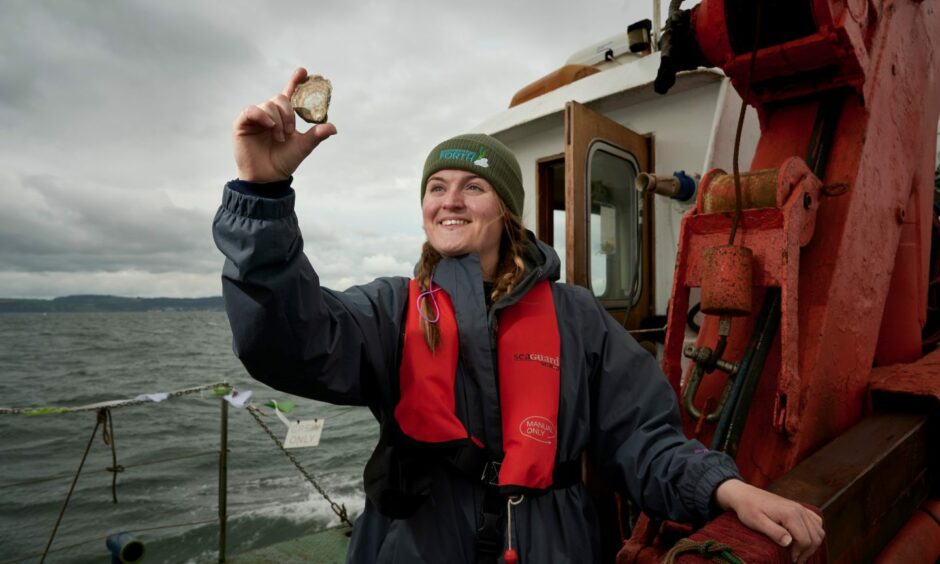Native oysters have been returned to the Firth of Forth for the first time in a century.
They are the first of 30,000 oysters being reintroduced as part of the groundbreaking Restoration Forth project.
The intention is to create a new oyster reef, providing habitat for other species including fish, crabs, sea snails and sponges.
The shellfish also filter water and improve water clarity, meaning more light can penetrate to the seabed.
And this allows plants such as seagrass to grow.
Historically, enormous native oyster beds in the Forth provided an important source of food.
But the species was lost due to overfishing and industrial development.
Oysters have cultural value in the Firth of Forth
The native oysters being introduced to the Firth of Forth were sourced from Little Loch Broom, near Ullapool.
And Caitlin Godfrey from the Marine Conservation Society, said: “Native oysters have huge cultural value in this area.
“Alongside seagrass meadows, they will play a crucial role in transforming the future of this coastal environment.”
Meanwhile, fisherman Bill Simpson, skipper of the Conserver boat, said: “I’ve been working on the Forth for over 50 years and have read and heard stories of oysters and Newhaven fishermen.
“It’s good to know we will have oysters back – let’s hope they go forth and multiply.”
Others can follow project’s example
Mairi McAllan, cabinet secretary for transport, net zero and just transition, was at the event to return oysters to the Firth of Forth.
She said communities are at the forefront of the restoration efforts.
And the Scottish Government is committed to supporting the recovery of the natural environment.
“I look forward to seeing many more projects following Restoration Forth’s example,” she said.
Restoration Forth partners include WWF, Fife Coast and Countryside Trust and the Ecology Centre in Kinghorn.
Heriot Watt University is also involved, along with the Marine Conservation Society and the Royal Botanic Garden in Edinburgh.














Conversation